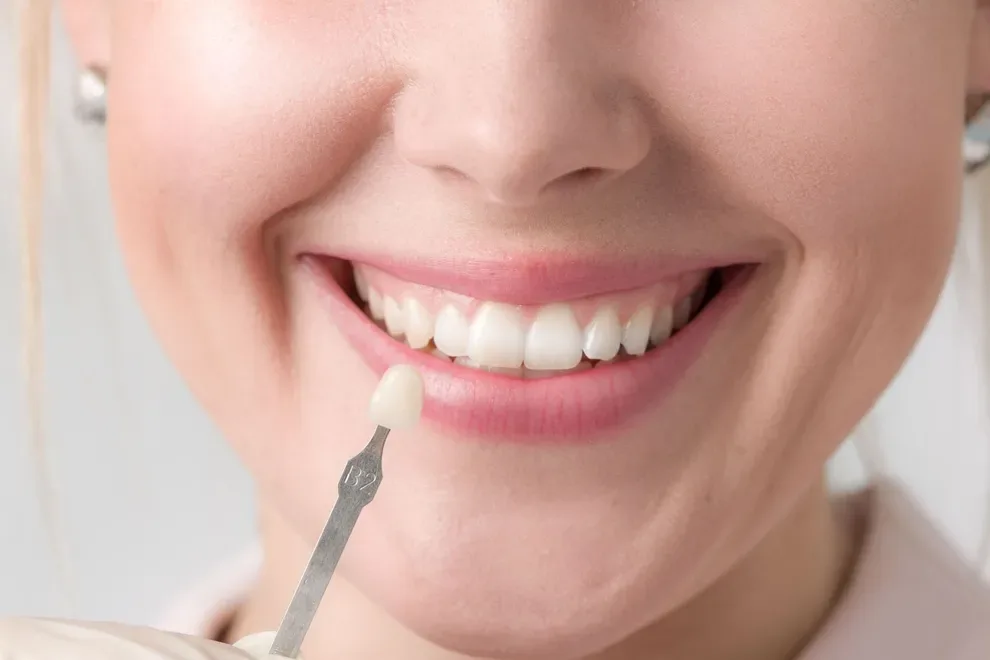Lumineers Costs: Types, Size & Case Difficulty

Table of Contents
- Veneers & Lumineers
- Factors Influencing Cost
- Lumineers & Insurance Coverage
Lumineers cost between $800 and $2,000 per tooth. The exact cost depends on the size needed, the difficulty of placing them, where you get them put on, and your specific oral health.
Lumineers are a brand-name type of veneer that are applied to discolored teeth to improve appearance. Lumineers typically cost more than traditional veneers and have many benefits, including less prep time.
Veneers and Lumineers are typically considered cosmetic. Therefore, they are not generally covered by insurance.
Veneers & Lumineers
Veneers are used to cover up discolored or broken teeth. They are bonded onto the teeth to make them look better. They are typically considered to be cosmetic, as they are designed to improve appearance.
There are five main types of veneers.
Porcelain veneers: These are the traditional form of veneers, and they are bonded permanently to your teeth. The ceramic materials resist future stains. They last an average of 10 to 15 years and often for as long as 20 years. Porcelain veneers cost between $925 and $2,500 per tooth.
These are made from the same material used for tooth-colored fillings for cavities. They last about half the time of traditional porcelain veneers, but they also cost less at about $250 to $1,400 per tooth.
This is a brand-name porcelain veneer that is made to be ultra-thin and requires limited prep. Lumineers are made exclusively by DenMat Lab in California and generally last between 10 and 20 years.
Lumineers are more translucent than traditional porcelain veneers. They are semi-permanent, and they take less time to apply than traditional veneers. Lumineers cost between $800 and $2,000 per tooth.
This is a special type of veneer that only covers the part of the tooth that is damaged. Since palatal veneers do not cover the entire tooth, they are less invasive and expensive. Palatal veneers usually cost between $650 and $1,200 per tooth.
These are usually snap-on, custom-made, and completely removable. These veneers generally cost the least, between $470 and $600 for lower and upper impressions, but they also can be more of a hassle and not be as seamless as permanent veneers.
Veneers application requires at least three appointments, while Lumineers can typically take two visits.
Factors Influencing Cost
There are a variety of reasons that Lumineers can vary in cost, including:
The size and amount of material needed. The bigger they are, the more they are going to cost.
The number of teeth you are covering. Generally, it is recommended to only place Lumineers on the teeth that are visible to help keep costs down.
Oral health. If other procedures must be done first or prep work needs to be more extensive, the cost can go up.
Difficulty of placement. If the teeth are more difficult to reach and place Lumineers on, it can increase the cost.
Where the procedure is done. Cost can depend on the dental professional placing your Lumineers and your geographical location.
Lumineers require little to no prep time, as opposed to traditional veneers, and your teeth will not have to be ground down before placing them.1 Lumineers are ultra-thin, about the size of a contact lens, and customized to your teeth. They are also semi-permanent, which means that they can be removed if requested without harming your teeth.
Lumineers & Insurance Coverage
Typically, Lumineers and veneers will not be covered by dental insurance, as they are considered cosmetic and elective.2
If veneers are needed due to tooth sensitivity, they can be classified as medically necessary. Then, you can get some costs offset through insurance. This depends on your specific insurance policy, provider, and plan.
A dental discount plan may be able to help you save money on Lumineers. Many dental offices and professionals also offer financing or payment plans to help make the cost of Lumineers more affordable.
